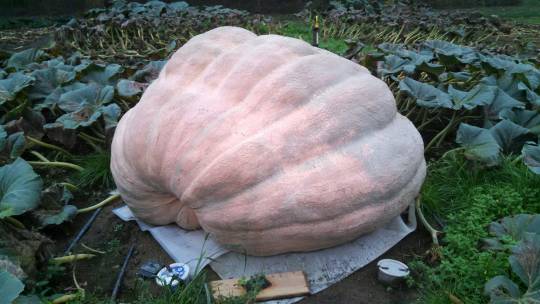
Have you ever seen a pumpkin as big as a small car growing in a nearby field?
Probably not, as pumpkins are naturally pretty modest-sized squashes. However, with a little manipulation and some closed cross pollination, people have figured out how to make pumpkins grow to colossal sizes, making them a great example of how humans can impact and alter nature.
The museum is exploring how people are changing our planet in the new exhibition We Are Nature: Living in the Anthropocene, which opens October 28.
The Anthropocene is the concept that human activity has had such a profound and pervasive impact on the planet that effects will be present in the fossil record millions of years from now.
Before the opening of the exhibition, which will feature specimens from the hidden collection, interactives, and more, the museum will have a giant orange delivery to kick off the conversation!
Local growers Dave and Carol Stelts grew a pumpkin that’s nearly 2,000 pounds that will be on display in the museum’s Sculpture Courtyard.
It takes more than a wave of a wand and the magic words “bippity boppity boo” to get pumpkins to grow this large.
Dave said this particular pumpkin was planted in June and grew 45-50 pounds a day for three consecutive weeks to reach its colossal size! He said it came from a “super seed” created by cross breeding large pumpkins.
The pumpkin will arrive by truck October 15 and will be on display for several months until it begins to rot. Come check it out!
Humanity and the environment are connected in new and complicated ways in the Anthropocene—the proposed geological era in which we now live. Learn more in Carnegie Museum of Natural History’s new exhibition We Are Nature: Living in the Anthropocene, opening October 28.
